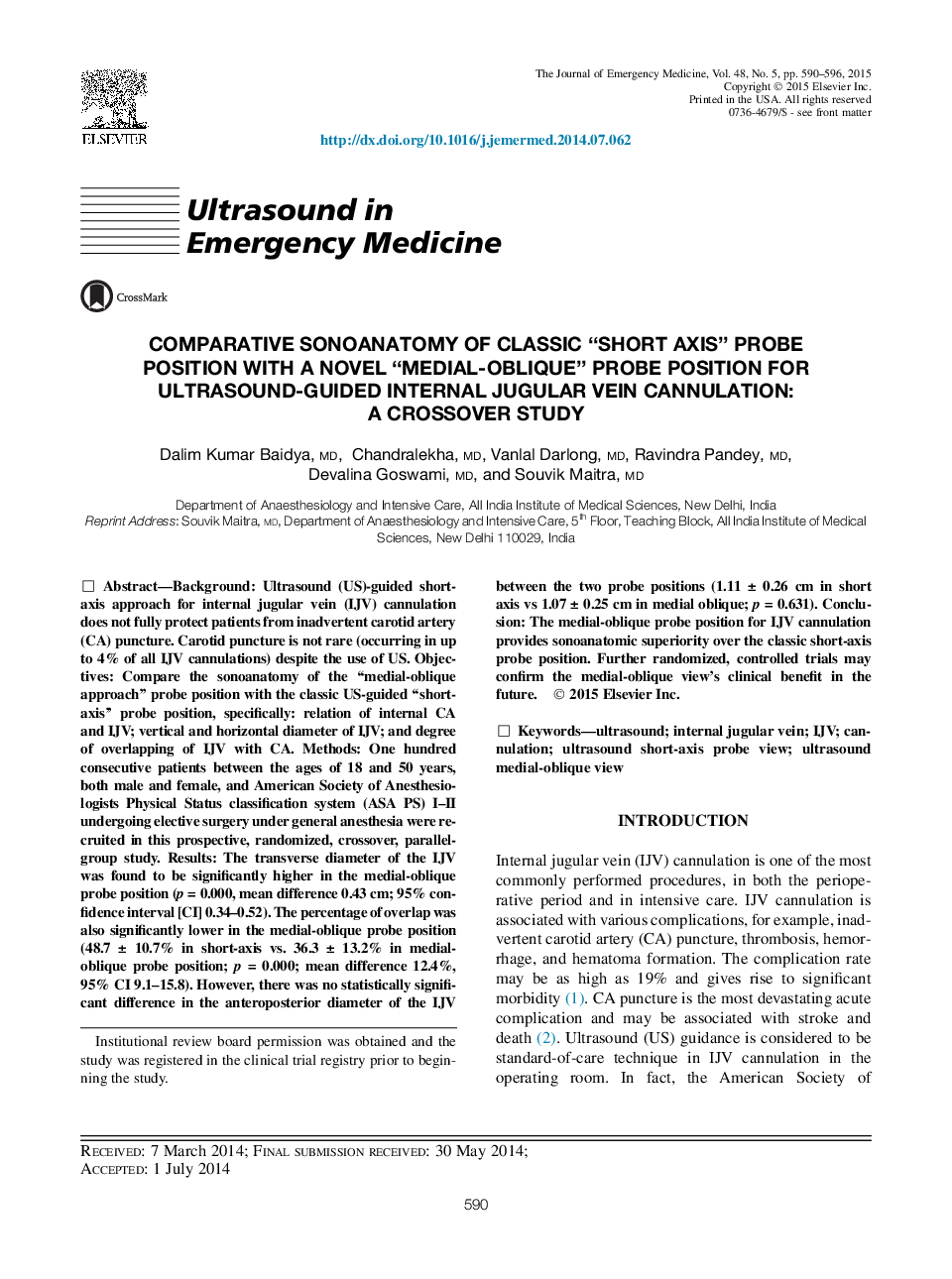| Article ID | Journal | Published Year | Pages | File Type |
|---|---|---|---|---|
| 3246454 | The Journal of Emergency Medicine | 2015 | 7 Pages |
BackgroundUltrasound (US)-guided short-axis approach for internal jugular vein (IJV) cannulation does not fully protect patients from inadvertent carotid artery (CA) puncture. Carotid puncture is not rare (occurring in up to 4% of all IJV cannulations) despite the use of US.ObjectivesCompare the sonoanatomy of the “medial-oblique approach” probe position with the classic US-guided “short-axis” probe position, specifically: relation of internal CA and IJV; vertical and horizontal diameter of IJV; and degree of overlapping of IJV with CA.MethodsOne hundred consecutive patients between the ages of 18 and 50 years, both male and female, and American Society of Anesthesiologists Physical Status classification system (ASA PS) I–II undergoing elective surgery under general anesthesia were recruited in this prospective, randomized, crossover, parallel-group study.ResultsThe transverse diameter of the IJV was found to be significantly higher in the medial-oblique probe position (p = 0.000, mean difference 0.43 cm; 95% confidence interval [CI] 0.34–0.52). The percentage of overlap was also significantly lower in the medial-oblique probe position (48.7 ± 10.7% in short-axis vs. 36.3 ± 13.2% in medial-oblique probe position; p = 0.000; mean difference 12.4%, 95% CI 9.1–15.8). However, there was no statistically significant difference in the anteroposterior diameter of the IJV between the two probe positions (1.11 ± 0.26 cm in short axis vs 1.07 ± 0.25 cm in medial oblique; p = 0.631).ConclusionThe medial-oblique probe position for IJV cannulation provides sonoanatomic superiority over the classic short-axis probe position. Further randomized, controlled trials may confirm the medial-oblique view's clinical benefit in the future.
